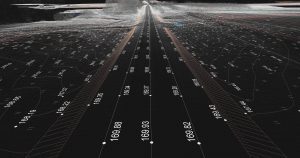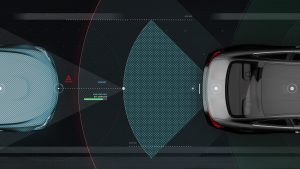LiDAR Optical Design for Automotive Applications
In the world of automotive innovation, LiDAR (Light Detection and Ranging) has emerged as a critical technology, especially in the development of self-driving cars and advanced driver-assistance systems (ADAS). At Avantier Inc., our optical engineers specialize in designing LiDAR systems that meet the unique demands of the automotive industry. We focus on custom LiDAR optical design, helping automotive manufacturers integrate high-performance LiDAR systems for precise, reliable distance measurements and object detection in real-time driving conditions.

What is LiDAR Optical Design?
LiDAR operates by emitting laser pulses from a laser source that reflect off objects in the environment, allowing the system to measure distances based on the time of flight (TOF) of the reflected light. The emitted laser pulses create a detailed 3D map of the vehicle’s surroundings, enabling vehicles to ‘see’ and navigate safely. The efficiency of both the emission and detection of laser light is crucial for LiDAR systems used in automotive optical components, where accuracy and response time are critical to avoid collisions and ensure smooth driving.
In automotive LiDAR, the optical design must ensure the system covers the vehicle’s entire field of view (FOV) while accurately detecting objects at various distances. The two main LiDAR designs—Flash LiDAR and Scanning LiDAR—offer different advantages depending on the driving environment.
Flash LiDAR in Automotive
Flash LiDAR, or solid-state LiDAR, uses a single laser pulse to illuminate the entire field of view. It is highly effective for short-range object detection, making it ideal for parking assistance, low-speed maneuvers, and collision avoidance in urban settings. By using diffusers to expand the laser beams, Flash LiDAR captures detailed data from a wide area in a single shot, which is then processed to calculate the distance to multiple objects simultaneously. However, its range is limited to about 30 meters, making it most useful in controlled, low-speed environments.
Scanning LiDAR in Automotive
Scanning LiDAR (Light Detection and Ranging)) is preferred for long-range applications such as highway driving and high-speed object detection. This system uses a collimated laser beam that scans the surroundings via rotating mirrors or prisms, capturing high-precision distance measurements for each point in the field of view. Scanning LiDAR provides greater accuracy at long distances, allowing autonomous vehicles to detect obstacles and plan routes far in advance. However, it is more complex and expensive than Flash LiDAR, with additional maintenance requirements due to its moving parts.

Automotive LiDAR Applications
In the automotive sector, LiDAR sensors are integral to the development of autonomous navigation vehicles and advanced driver assistance systems (ADAS). Self-driving cars rely on LiDAR for real-time 3D mapping of their surroundings, enabling them to detect and avoid obstacles, pedestrians, and other vehicles with precision.
LiDAR also plays a crucial role in:
- Adaptive cruise control: By continuously monitoring the road ahead, LiDAR ensures safe distances between vehicles, contributing to more responsive lighting systems in autonomous vehicles.
- Emergency braking systems: LiDAR detects imminent collisions and triggers automatic braking, enhancing safety.
- Traffic sign and object recognition: LiDAR scans the environment to identify road signs, lane markings, and dynamic obstacles, improving navigation and supporting adaptive lighting systems that respond to real-time conditions.
Additionally, LiDAR technology is used to create topographic maps, further showcasing its versatility. Its ability to provide high resolution 3D data in all weather conditions makes it indispensable for the future of automotive safety and autonomous driving systems. At Avantier, we are ready to help automotive manufacturers design, build, and implement advanced LiDAR systems tailored to their specific needs, ensuring optimal performance and reliability for the road ahead.

Customize your LiDAR Optical Design
At Avantier, our high performing optical components and custom optical design services for LiDAR ensure optimized efficiency for any application—from automotive and robotics to surveying and environmental monitoring. Whether you need enhanced range, accuracy, or field of view, our expert engineers, equipped with exceptional optical technologies, will collaborate with you to design, prototype, and manufacture a solution that meets your exact specifications. Let us help you bring your LiDAR vision to life— contact us today to discuss your custom optical design project!
WE CAN HELP YOU!
Contact us NOW for sales & expert advice.







